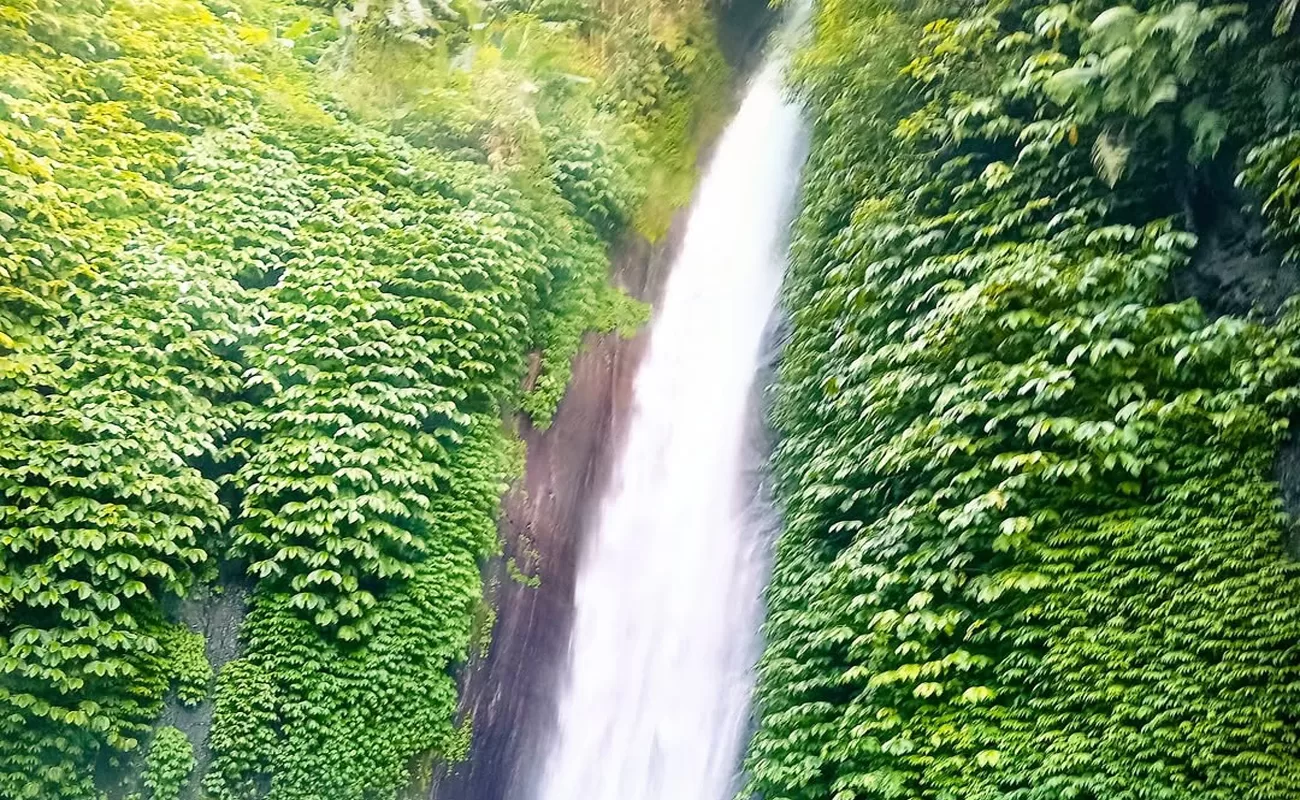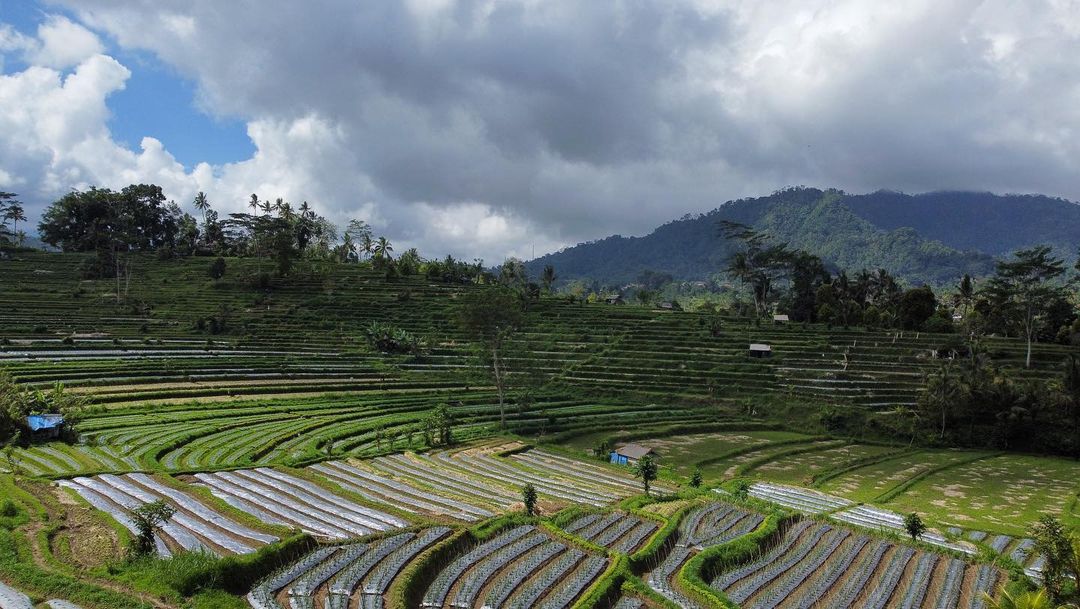Things To Do In Munduk – Munduk is a village in Banjar District, Buleleng Regency, Bali, renowned for its natural beauty and long history as a coffee-producing region. The village is estimated to have been established around 900 AD and was originally part of the area around Lake Tamblingan, where its inhabitants lived before relocating to their current location.
Historically, Munduk has been known as the main centre for Arabica coffee in Bali since the Dutch colonial era, around the mid-1800s. Coffee in Munduk became a source of prosperity for the community and was exported to the Netherlands and Germany via ports in Bali.
In addition to coffee, the village’s potential also includes crops such as cloves, vanilla, cocoa, and corn, grown on fertile volcanic soil with abundant water sources. Munduk Village is also located in an area with beautiful mountainous landscapes, featuring stunning waterfalls and a backdrop of mountains such as Mount Batukaru, Lesung, and Sanghyang.
Munduk Village is not only economically important through coffee and agriculture, but the local community also places great emphasis on preserving nature and culture, including traditional customs passed down through generations. There is a special temple called Pura Kopi, built around 1920 to honour the coffee plant and the deity protecting plants.
Geographically, Munduk is located at an altitude of 600-1,500 metres above sea level, making it a cool and fertile area, ideal as an agricultural and nature-based tourist village. Its strategic location also made it a favourite stopover for the Dutch during the colonial era and an important tourist destination in Bali.
Munduk is an old village in Bali rich in history, culture, and nature, widely known as a coffee centre and a refreshing natural tourist area with various agricultural and cultural potentials that continue to be preserved by its community.
Read also : Things to do in Sidemen
Things to do in Munduk and arround
Munduk Waterfall
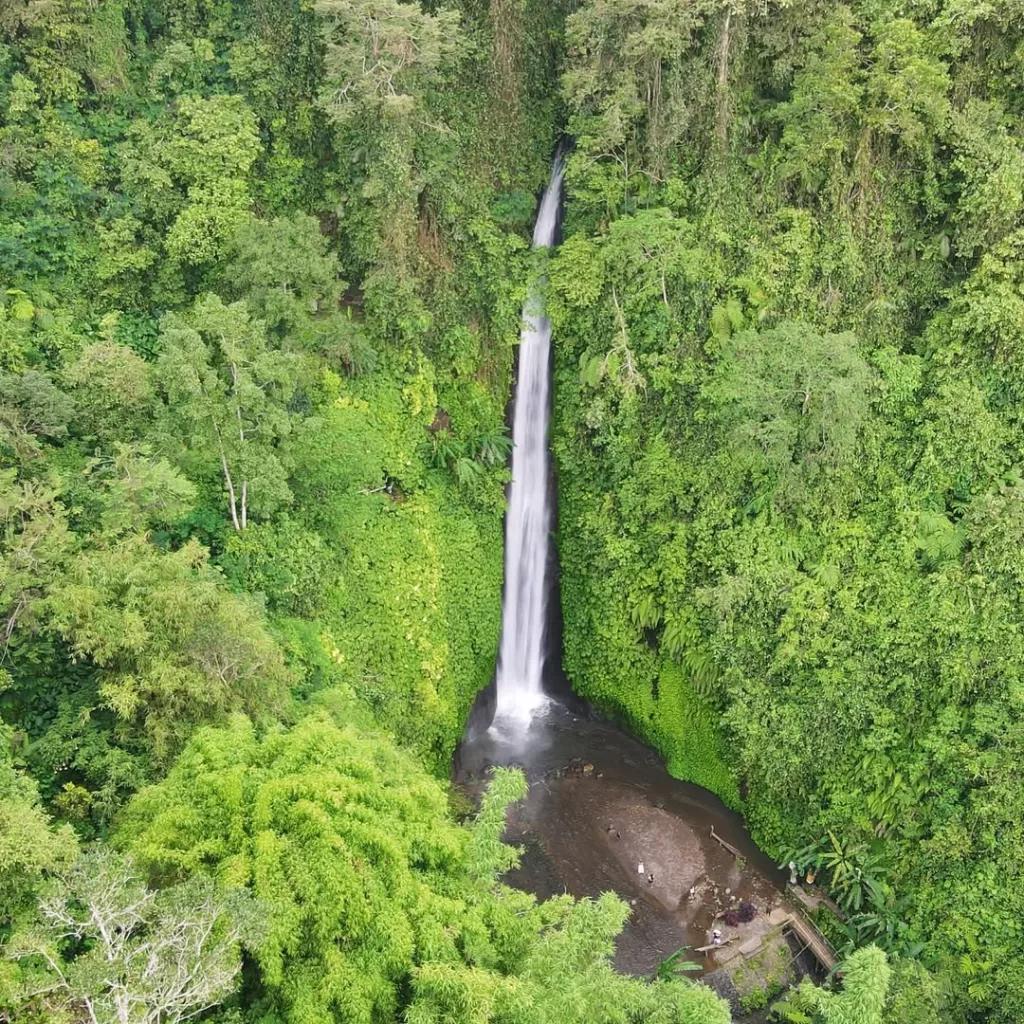
Munduk Waterfall, also known as Red Coral Waterfall, is located in a highland area at an altitude of around 800-900 metres above sea level, giving it a cool and beautiful atmosphere with lush vegetation surrounding it.
Munduk Waterfall stands at a height of approximately 15–20 metres, with clear and swift-flowing water. Below the waterfall lies a large natural pool, which visitors often use for swimming, soaking, or simply enjoying the fresh mountain water.
The natural beauty and calming atmosphere make it a favourite spot for healing, trekking, or relaxing while enjoying the views of clove, coffee, and other plantations along the way to the location.
Due to its relatively remote location and challenging terrain, it is recommended to visit during the dry season to avoid slippery roads and to avoid weekends as the area can get quite crowded.
Melanting Waterfall
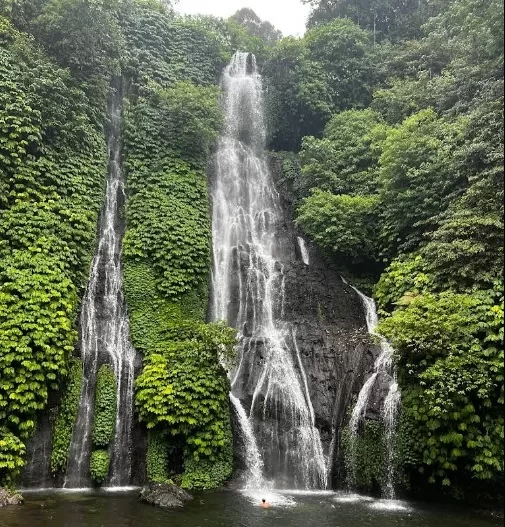
Melanting Waterfall, also known as Laangan Waterfall, is one of the waterfalls located in Munduk Village. This waterfall has a height of approximately 20 metres. The location of Melanting Waterfall is situated at an elevation of around 900 metres above sea level, resulting in a cool climate and being surrounded by forests and traditional plantations such as coffee and cloves, which add a natural and serene ambiance.
Melanting Waterfall is a favourite destination for those seeking peace and natural beauty away from the crowds. Here, visitors can enjoy the refreshing natural surroundings, go on challenging treks, swim, or have a picnic around the waterfall. Access is via a hiking trail that can be challenging at times but offers stunning views of lush greenery.
This place is perfect for a peaceful nature trip, far from the crowds, and offers an authentic nature exploration experience in North Bali. Melanting Waterfall is the ideal choice for travellers who wish to enjoy the charm of Munduk Village’s cool, green surroundings, rich with the beauty of waterfalls and lush mountain landscapes.
Munduk Terraced Rice

The terraced rice fields in Munduk are part of Bali’s agricultural cultural heritage that has existed for centuries. This terraced farming technique is a method of farming on sloping land that helps overcome hilly terrain by creating terraced fields so that they can be used to grow rice and other crops effectively. Terraced rice fields not only serve agricultural purposes but also prevent soil erosion and regulate water distribution through Bali’s traditional irrigation system known as subak.
Munduk itself is an agricultural village in Bali dominated by crops such as coffee, cloves, and cash crops, and has rice fields managed by subak. The terraced system and subak support soil fertility in mountainous areas like Munduk, which is located at an altitude of around 600-1,500 metres. The terraced rice fields there provide a beautiful landscape and are part of the village’s nature and agrotourism, although they are not as famous as other terraced locations such as Jatiluwih.
Wanagiri Hidden Hill
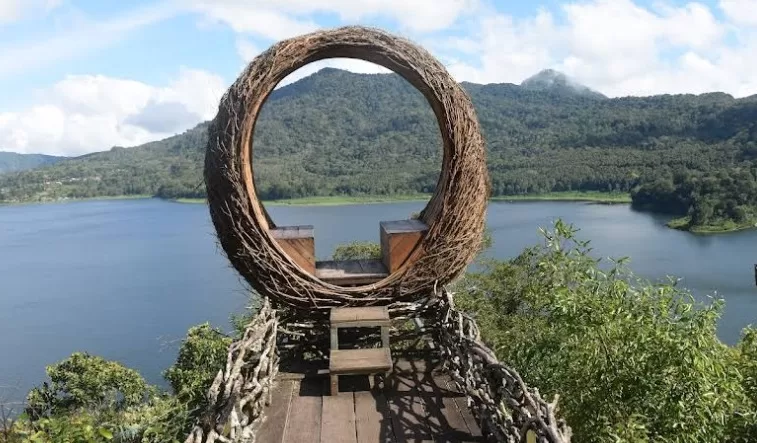
Wanagiri Hidden Hills is a popular natural tourist destination located on Jalan Raya Munduk, Pancasari, Sukasada District, Buleleng Regency. One of the main attractions of Wanagiri Hidden Hills is the breathtaking view from the heights overlooking two large lakes in Bali, namely Lake Buyan and Lake Tamblingan, often referred to as twin lakes due to their adjacent locations separated by a small forest.
From this location, visitors can enjoy the fresh mountain air and the enchanting green hillside panorama. Wanagiri Hidden Hills is also known for its diverse and unique Instagram-worthy photo spots, such as a large wooden swing (big swing) suspended above a valley, a giant bamboo bird cage, a giant cement hand sculpture, a curved wooden bridge, and a sunflower-shaped observation deck—a favourite spot for watching sunrise and sunset.
Bali Handara Gate

Bali Handara Gate is an iconic stone gate located in the Handara Golf & Resort area, Pancasari Village, Sukasada District, Buleleng, not far from the Munduk area. This gate features a grand and symmetrical traditional Balinese design, resembling a Balinese temple gate or gapura, although it is actually the entrance to a golf course, not a temple.
The gate is known as the ‘Gateway to Heaven’ due to its highly photogenic appearance, with a straight asphalt road leading up to the centre of the gate and a backdrop of green mountains and mist that often shrouds the surrounding area at an elevation of approximately 1,400 metres above sea level. The beauty and uniqueness of the Bali Handara Gate make it one of the most popular photo spots in Bali, especially on social media.
Ulun Danu Beratan Temple
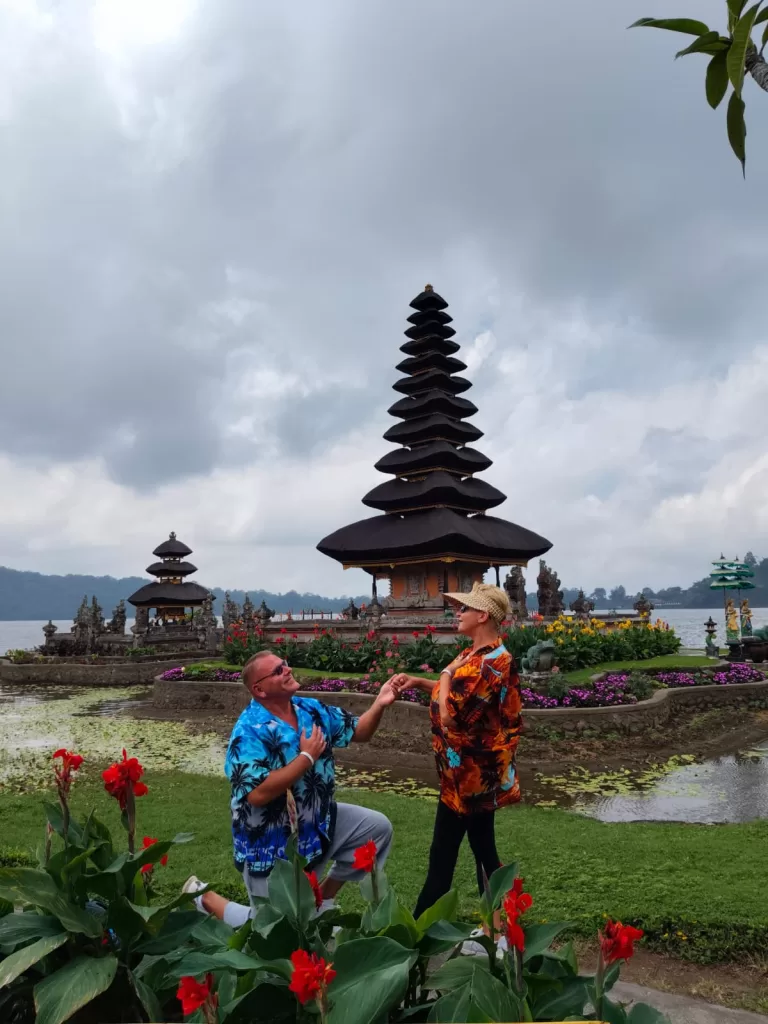
Ulun Danu Beratan Temple is a large and important temple located on the northwestern shore of Lake Beratan, close to Munduk Village. The temple was built around 1634 AD (1556 Saka) by I Gusti Agung Putu, founder of the Mengwi Kingdom.
Pura Ulun Danu Beratan serves as the main place of worship for Dewi Danu, the goddess of water and fertility, who is very important to the Balinese people, especially farmers, as this temple is the spiritual centre for irrigation and soil fertility in the Bedugul area. Its unique location on the edge of the lake gives the impression that the temple is floating on the water, with a beautiful backdrop of green hills.
Ulun Danu Beratan Temple complex consists of several important shrines, such as the Telengin Segara Shrine with its 11-tiered meru and the Lingga Ulun Danu Shrine with its three-tiered meru extending into the centre of the lake. Beyond its religious functions, the temple also serves as an exotic cultural and tourist icon of Bali.
Historically and culturally, Pura Ulun Danu Beratan symbolises the harmony between humans, nature, and spirituality through reverence for water as a vital element of life and agriculture in Bali. This temple complex is not only important religiously but also a famous tourist attraction in Bali.

